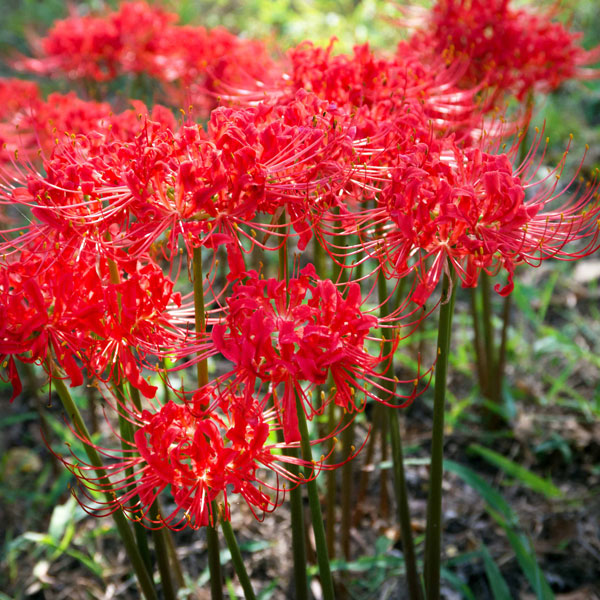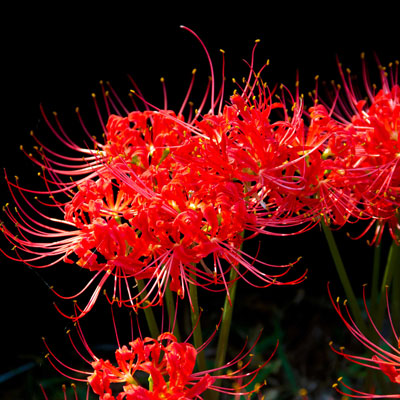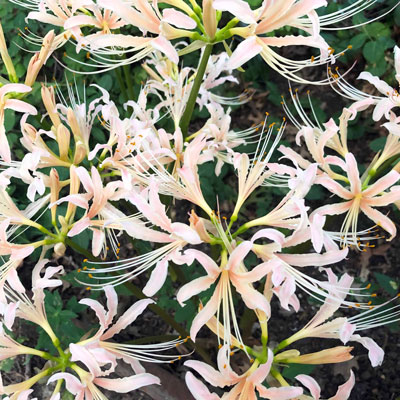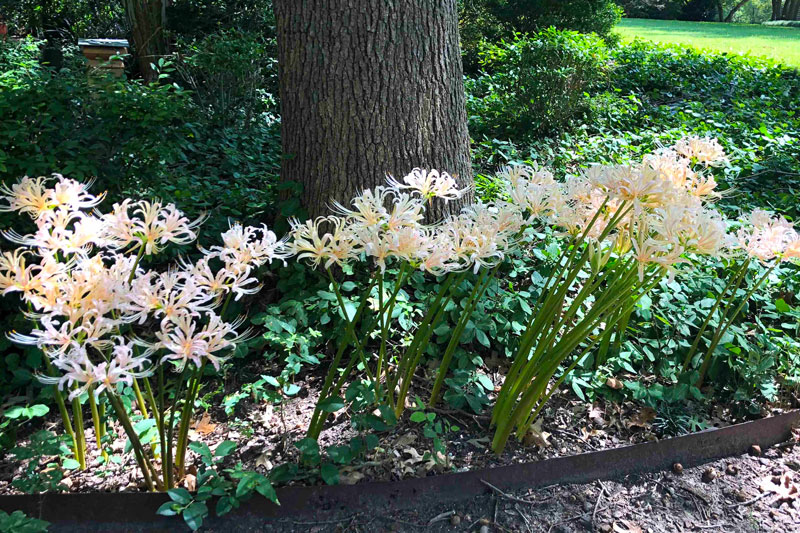Spider lilies all over the place
About the time fall arrived in College Station the spider lilies sent up their bloom stalks. I grew up just a few blocks off the campus in a neighborhood that’s now approaching 80 to 90 years old. My friends’ mothers and grandmas lived and gardened in those yards, and this was one of their fall-flowering staples. And here we are still loving it all those decades later.

The common one that everyone grew was the red-flowering form Lycoris radiata. Many of us still feel it’s the prettiest since it brightens up gardens after long and hard summers. Its 18-inch flower spikes come out of nowhere to support tennis-ball-sized flower heads that look like a holiday fireworks display.

Meanwhile, the bulbs’ leaves are waiting in the wings. They make their grand show several weeks after the plants finish blooming. Their daffodil-like leaves emerge in mid-fall and hang around through the winter and well into spring. It’s imperative that we leave them in place to manufacture and store food reserves in the bulbs for the next year’s blooms.
Growing particulars…
Spider lilies do best in acidic or neutral soils, although they’re certainly tolerant of alkaline ground, too. But they need to be planted where they can be left undisturbed for decades at a time. That’s when they put on their best show. Unlike most other bulb types, they dislike being dug and divided. It’s not uncommon for them to wait several years after planting before they start throwing out blooms.
Plant the bulbs in groupings several inches apart and 2 to 3 times as deep as the bulbs are tall. It’s best to buy freshly dug, full-sized bulbs from a reputable source. They do well with morning sun and afternoon shade. They will not grow and bloom as well if trees grow larger and cast heavy shade onto their foliage.


White-flowering spider lilies, Lycoris albiflora, are in flower along the Sperry drive at this time. By their third day in bloom the flowers begin to shade toward pink. While I still prefer the cheering red blooms, these are really showy at night as we come home from late meetings. There’s just not a Lycoris to like!
While spider lily bulbs are often grown around rice paddies in their native home of Japan, they don’t need overly wet soils. That’s especially true in heavy clays. The ideal soil would be a loose, well-draining soil that could be kept moist at all times.
Note: Here is a great write-up on spider lilies in Japan. There’s a lot of interesting detail here. Take a look and be sure to watch the short video of spider lilies in their “native” home in Japan.
